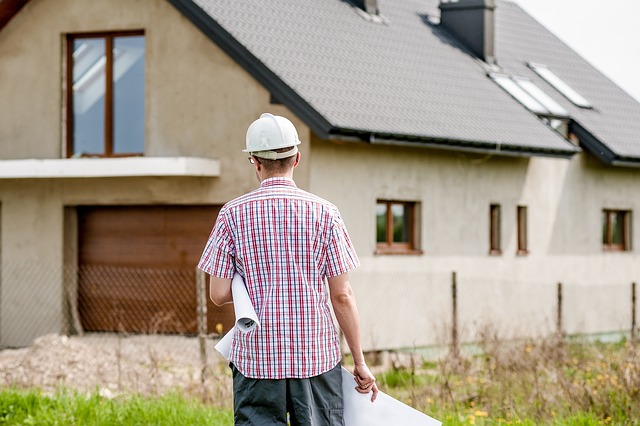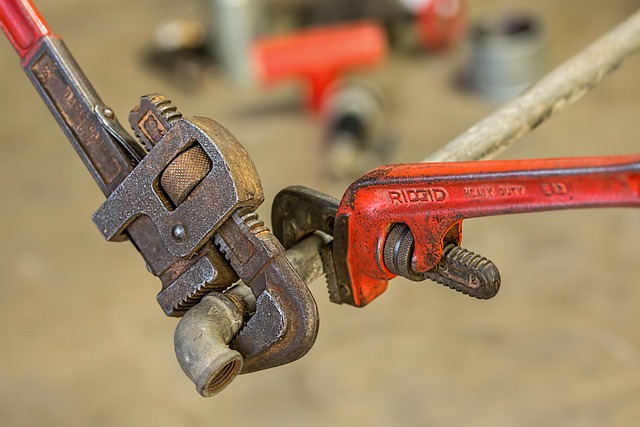Effective home maintenance is crucial for maintaining the functionality and longevity of household appliances. It involves understanding basic installation and repair practices to prevent future issues. Properly installing an appliance, like a refrigerator, requires attention to details such as leveling it and ensuring the door seals correctly for optimal performance and temperature control. Regular maintenance and troubleshooting skills are key to identifying and resolving problems early, saving time and money. Many DIY repairs, including belt replacements or tightening connections, can enhance appliance reliability and safety. Routine maintenance is essential for a comfortable, efficient living environment and can be achieved through research or professional training in Home Repair and Maintenance. Safety is paramount during installation, particularly when dealing with electrical systems or water/gas connections. Always refer to the user manual, prepare with necessary tools and protective gear, and ensure all connections are secure and tested before restoring power. For complex issues like gas leaks or electrical faults, professional technician assistance is necessary. By prioritizing Home Repair and Maintenance, homeowners can ensure their appliances operate at peak performance and prevent costly repairs down the line.
Navigating the complexities of home repair and maintenance often necessitates a grasp of appliance installation and repair. This article demystifies the process, providing a comprehensive guide to installing major home appliances safely and troubleshooting common issues. Whether you’re a homeowner looking to tackle DIY projects or a professional seeking to expand your skill set, this resource is tailored to enhance your understanding of effective home maintenance through actionable insights and repair techniques for various appliances.
- Understanding the Basics of Home Appliance Installation and Repair for Effective Home Maintenance
- Step-by-Step Guide to Safely Installing Major Home Appliances
- Troubleshooting Common Issues and Repair Techniques in Home Appliances
Understanding the Basics of Home Appliance Installation and Repair for Effective Home Maintenance

Maintaining a well-functioning household requires a foundational understanding of home appliance installation and repair. Homeowners can prolong the lifespan of their appliances and ensure their continued efficiency by familiarizing themselves with basic maintenance practices. A key component in this regard is knowing how to properly install new appliances, as incorrect installation can lead to inefficiencies, safety hazards, or premature wear and tear. For instance, when setting up a refrigerator, it’s crucial to level it correctly for optimal performance and to ensure that the door seals properly to maintain proper temperature control. Similarly, when it comes to repairing appliances, a proactive approach can save time and money in the long run. Basic troubleshooting skills enable homeowners to address common issues like faulty switches, clogged filters, or tripped circuits before they escalate into larger problems. Simple repairs such as replacing a washing machine’s belts or tightening loose connections are within the scope of many DIY enthusiasts, enhancing the overall reliability and safety of home appliances. Engaging in regular maintenance and understanding the basics of installation and repair through research or professional training contributes significantly to effective home maintenance and can help maintain a comfortable, efficient living environment. Home Repair and Maintenance are not just about reacting to issues as they arise; it’s also about being proactive to prevent them, thereby ensuring that your home’s appliances operate at their best for as long as possible.
Step-by-Step Guide to Safely Installing Major Home Appliances

When installing major home appliances, safety and precision are paramount to ensure proper function and longevity. Begin by reading the user manual thoroughly for specific instructions tailored to your particular model. This is a critical step in home repair and maintenance, as it provides essential guidelines unique to the appliance’s make and model. Next, ensure you have all necessary tools and materials at hand, including screwdrivers, wrenches, level, and protective gear like safety glasses and gloves. For electrical appliances, always cut off power to the area where you will be working by turning off the circuit breaker corresponding to that appliance. This step is crucial to prevent electric shock and reduce fire risk during installation.
Once the area is safe, proceed with preparing the installation site. If the appliance requires a water connection, shut off the water supply line and connect the appliance’s hoses according to the manufacturer’s instructions. Double-check all connections for leaks or potential disconnections. For gas appliances, follow similar precautions: turn off the gas valve, connect the gas lines correctly, and ensure a secure and tight seal to prevent gas leaks. After securing the appliance in place, level it properly using a spirit level to avoid any operational issues that can arise from an unstable or uneven setup. Finalize by reattaching any necessary wiring, ensuring that all connections are snug and insulated. Lastly, test the appliance to verify its functionality before restoring power or turning on the water/gas supply. This meticulous approach to installation is a cornerstone of home repair and maintenance, safeguarding your family and property from potential hazards associated with faulty installations.
Troubleshooting Common Issues and Repair Techniques in Home Appliances

When encountering common issues with home appliances, prompt troubleshooting is key to maintaining a smoothly functioning household. Homeowners often face problems such as leaks, electrical faults, or malfunctions in refrigerators, ovens, washing machines, and dryers. Addressing these issues promptly can prevent minor problems from escalating into major failures. A fundamental part of home repair and maintenance is understanding the basic operations and potential points of failure for each appliance. For instance, a refrigerator not cooling could be due to a faulty thermostat, dirty coils, or a tripped circuit breaker. Troubleshooting starts with checking the obvious: ensuring the appliance is properly plugged in, examining fuses or circuit breakers for any tripped switches, and clearing any obstructions that may interfere with proper airflow or operation.
For repairs, it’s crucial to follow safety protocols, including turning off and unplugging the appliance before starting any work. Simple fixes like tightening loose connections, replacing worn-out seals, or cleaning filters can often restore functionality without the need for professional intervention. However, when dealing with more complex issues such as gas leaks in a stove or electrical problems in a microwave, it’s wise to consult a licensed technician. Regular maintenance, such as inspecting hoses and connections for wear and tear, cleaning lint from dryers, and lubricating moving parts, can extend the lifespan of appliances and prevent many common issues. Home repair and maintenance are not just about fixing what’s broken; they’re also about preventing problems by keeping appliances in optimal condition.
Effective home maintenance is a cornerstone of sustainable living, and mastery over home appliance installation and repair is integral to this endeavor. This article has provided readers with a foundational understanding of the basics in appliance upkeep, complete with a detailed guide for safe installation of major home appliances and an overview of common issues and their respective repair techniques. By applying these insights, homeowners can confidently manage their household’s mechanical components, ensuring that each device operates at peak performance. With the knowledge gained from this exploration into home repair and maintenance, you are now equipped to tackle the challenges presented by your appliances, fostering a more efficient and reliable living environment.
